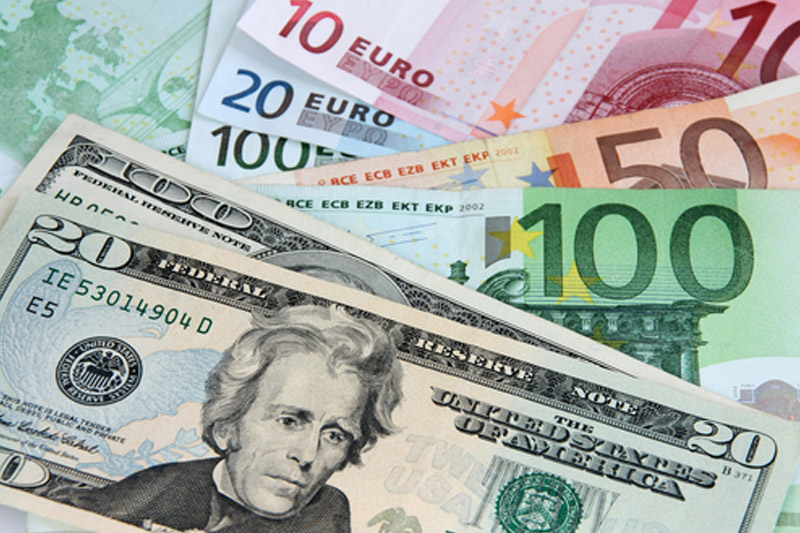Investing.com -- EUR/USD fell modestly on Friday, retreating from three-month highs reached in the prior session, as currency traders continued to assess the risks associated with negative interest rate policies one day after Sweden's Central Bank unexpectedly lowered their rates deeper below zero.
The currency pair traded in a broad range between 1.1214 and 1.1333 before settling at 1.1255, down 0.0061 or 0.54% on the session. Despite the slight losses, EUR/USD has still closed higher in seven of the last 10 sessions and 11 of the last 15. After nearly slipping below 1.08 at the end of last month, the euro is up by nearly 4% against its American counterpart in February.
EUR/USD likely gained support at 1.0538, the low from December 3 and was met with resistance at 1.1496, the high from Oct. 15.
The euro posted a rare losing session, as banking stocks in the euro zone rallied more than 4% after Deutsche Bank (DE:DBKGn) AG NA O.N. (N:DB) announced that it will buy back $5.4 billion of its senior debt in an effort to reduce panic among investors. It came days after credit default swaps on the German bank's junior bonds surged more than 10% in a single session to reach its highest level on record. The European bond market has come under intense pressure in recent weeks from crashing oil prices, outflows from sovereign-wealth funds and strong indications that the European Central Bank will lower interest rates deeper into negative when its Governing Council holds its next monetary policy meeting in March. Entering Friday's session, banking stocks in the euro zone had crashed more than 25% since the start of the year.
Federal Reserve chair Janet Yellen capped a two-day appearance before Congress on Thursday by testifying that the U.S. central bank has not taken negative interest rates off the table, even as the prospects of cutting rates remains unlikely. Over the last several months, a host of central banks have adopted Negative Interest Rate Policies (NIRP) as a tool for staving off deflation and bolstering economic growth. Under the policy, central banks charge financial institutions for parking excessive reserves at their banks as a way of spurring lending. Critics of the practice argue that it may either severely restrain the profits of major banks or force them to pass the costs off to customers by increasing fees.
As banking stocks around the world have fallen steeply this week, investors have piled into safe-havens such as gold, U.S. treasuries and the Japanese yen.
In late-January, the Bank of Japan rattled global markets with a surprising decision to implement a negative interest rate policy for the first time in central bank history. With the European Central Bank's deposit rate already in negative territory, it marked the first time two of the world's top three central banks held rates below zero at the same time. Economists have also explored whether central banks in China, Australia and Norway could join Sweden and Denmark in adopting the policy.
EUR/USD is only down by 0.06% from its level last February, when investors geared up for the launch of the ECB's ambitious €60 billion a month asset purchasing program. In 2015, the euro fell by approximately 10% against the dollar.
Yellen also emphasized in her testimony that the Fed will not take a "preset path" for normalizing policy during its first tightening cycle in nearly a decade. Following the Federal Open Market Committee's historic rate hike in December, the FOMC sent strong indications that it could raise short-term interest rates as much as four times this year. While Yellen did not address whether the FOMC will hold short-term interest rates steady at its March meeting, there is a strong probability the Fed will raise rates fewer than two times in 2016, according to current market expectations.
Yields on the U.S. 10-Year surged more than 10 basis points to close at 1.746%. On Thursday, yields on 10-year U.S. government bonds fell as low as 1.53%, their lowest level since April, 2012.
The U.S. Dollar Index, which measures the strength of the greenback versus a basket of six other major currencies, gained more than 0.45% to an intraday high of 96.25, before closing at 95.99. The index is still down more than 3.7% since the BOJ's rate decision on January 29.
